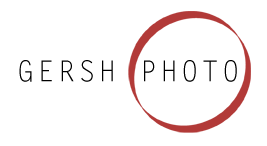I remember having to do a panorama in a high school photography class. Mine was of a tree line across a lake shot with a 50mm lens on my old Pentax ME Super. It looked ok. Most things lined up.
For fun, I tried another one. On the second one, the subject was much closer. When I started to line up the images, I realized it just wasn’t going to happen. Nothing lined up. At the time, I didn’t know why. Now I do.
Two words. Nodal point. Essentially, this is the point where the image inverts in the lens.
When doing a panorama, many people will try to put their camera on a tripod using the threaded mount on the bottom of the camera body. Unfortunately, that is not under the nodal point and will cause distortion between images and not allow perfect alignment. Perfect alignment comes from the camera’s rotational point happening directly below the nodal point of the lens.
For example, I used the mount on the bottom of my camera months ago while doing a panorama inside of a church. Most things lined up but some of the pew backs did not. It is especially noticeable on the back few pews on the left.

The interior of the new St. Anne Catholic Church is seen in this photo illustration showing approximately a 180-degree view. The image was composed from 24 separate photos. (C-T photo illustration Max Gersh) ©2010
What the camera companies would like is for you to buy one of their multi-hundred dollar panoramic tripod heads. But if you’re like me and know what lens you will be using and want to save a ton of money, it is pretty easy to build one on the super cheap.
I started out by getting a piece of 1/8″ aluminum. I had this already but you can find it at any hardware store. A long rail of it is about $10. I did buy a few bolts and nuts to tighten things down (total of less than $1.50). I made sure every piece of hardware was 1/4″-20, the same thread as a standard camera mount.
I centered and drilled a 1/4″ hole at one end of the aluminum plate. Then I mounted my camera to it with one of the bolts I bought.
There are plenty of tests online to find your nodal point. I did pretty much the same thing as everyone else. I set up two objects in a direct line about a meter apart. The camera is straight in line with them as well. As you pan, the items will stay in line if the nodal point is correct. If not, the objects wont appear to be aligned unless you are looking straight on. This website has visuals of how it looks when the slide is correct, too far forward and too far backwards.
**UPDATE** I’ve been asked how I had the plate attached to the tripod to find the nodal point before I had any holes drilled for attachment. I simply used a spring clamp similar to this one. I would slide the plate and clamp it in place and do the panning test. I then would adjust and re-clamp and the do it again and again until I got it just right.
When I found the right point, I made a mark on the plate and drilled a hole there.
I put the tripod screw through that hole and used a hex nut to lock it down. Then, used a bolt and attached the camera.
I was building this for my Canon 1D Mark II with the 24-70 f/2.8 L lens zoomed at 24mm. If you’re trying to make this for the same setup, the center of the two holes on the slide are about 5.5″ apart.
Now, if you have a drill press or other fancy tools, you could actually make this a “slide” so you could adjust it on the fly for other focal lengths. If I wanted to do another focal length, I’d have to do the alignment test again and drill a new hole.

This is the DIY nodal point slide on the floor with the camera hole and tripod hole drilled. I marked which was which and added an arrow to show the direction of the lens to avoid any confusion in the field. ©2010
Here is what my camera looks like on the rig.

My Canon EOS 1D Mark II with 24-70 f/2.8 L lens on a DIY nodal point slide to achieve accurate panoramas. ©2010
Having the urge to do an immediate test, I ran outside of my apartment and took a quick panorama of the building.

A quick test panorama of my apartment building using my DIY nodal slide. This panorama is composed of 14 images. ©2010
Notice how all of the lines in the sidewalk and building line up perfectly. Also notice my lovely shadow.
If you try this on your own, keep in mind that these panoramas are cropped to cut out the dead space. Dead space happens around the edges on all panoramas in the gaps where you don’t photograph. Here is the above panorama of my apartment with the dead space left in.

A quick test panorama of my apartment building with the dead space left in. This panorama is composed of 14 images. ©2010
After determining that my nodal slide was a success, I headed out to Memorial Park in New Castle, IN to make some more scenic panoramas.
One I did while out there was of my car. It has many things that have to line up. I figured that would be another good test to make sure everything lined up.

A panorama of my Subaru Forester in Memorial park. This was shot on my DIY nodal slide and consists of 18 images. ©2010
All of the lines matched up perfectly. It lined up so perfectly that you can’t really tell how close I was to the car while shooting. I couldn’t fit the entire car in a single frame with a 24mm lens. Just keep in mind that it took 18 images to compose the entire scene.
I then turned to the large pond. I walked down into a muddy area where it appeared the water had receded. To put this to the true test, I did a 360 degree panorama. Composed from 55 separate images, the full resolution of this image is unreal.

A 360 degree view in Memorial Park made from 55 separate images. Shot on my DIY nodal slide. ©2010
With the same set of images, I decided to see if I could form it into what is commonly known as a “wee planet” through a process called stereographic projection. Here is how it turned out.

A stereographic projection (wee planet) at Memorial Park. Shot on my DIY nodal slide and consists of 55 separate images. ©2010
I’d say $1.50 well spent and good use of some scrap metal.


Maxgyver?
Craig, something like that.
Most panorama camera mounts, Kirk, Nodal Ninja, Really Right Stuff or DIY, tend to promote vertical or portrait mode for the camera postion. Landscape or horizontal adds distortion with wide angle focal lengths and limits the height of an image. Why do you only use the landscape method?
Mr. Royer, you are right. Most panoramic tripod heads do promote vertical mounts. However, for the simplicity of things, I opted for keeping it with the horizontal mount. While in some scenarios it would seem like this could limit the vertical height of an image, this has not been the case for me. I tend to make three passes with the camera. One that is level. One that is angled upwards. And a third angled downwards. This actually gives me more vertical height than using my camera mounted in a vertical position. Your point about lens distortion is also a good one. Even the Canon 24-70 L has a very slight barrel distortion at the wide side. I have found that when lining up the nodal point and using a good stitching software, the slight distortion doesn’t matter much.
Everything you questioned was right on your part. My device isn’t perfect. But it is cheap and easy and yields decent results.
Great work! One question though…do you have stitching problems from not rotating vertically about the nodal point? Seems like your up and down panning might have trouble with horizontal lines like fence rails in the foreground(although your sample images certainly have some lines). Any thoughts?
Thanks Christian. So far, while doing regular panoramas, I have had no issue with stitching vertically or horizontally. I had a few slight misalignments with a recent stereographic projection but I think that was because I had too many images. As you can see on my sample of the car and the apartment building, everything lines up. All of the trees, cracks in the sidewalk, etc. It might be the software correcting for my plate’s flaws but it seems to do a great job. I may build a vertical mount down the road at some point but this horizontal plate was so cheap and easy to make. A vertical mount would take a little more thought and would likely be more permanent for one focal length since I don’t have the ability for an actual slide adjustment.
[…] preview tab. The two players are two of the best in the county. This image was shot using my DIY nodal plate. There are a few mistakes but I think they happened because I was rushed and may have actually […]
Pretty good article. I just stumbled upon your blog and wanted to say that I have really enjoyed reading your blog posts. Any way I’ll be subscribing to your feed and I hope you post again soon.
Hello. Nice DIY. I am starting out take pano and have read plenty of how to setup the camera and what equipment I need to take images that will align up perfectly during stitching.
Since I am a handyman, I opt to get the nodal slider from RRS. I wanted to get the multi-row setup, but it is too expensive for me. So for now, I am getting just the slider. I will add on when the time comes.
My question to you is that finding the no-parallax point is not only for two objects that are in-line with one another to be in-line all the time, but also for other objects in close distance to the camera to be align up perfect during stitching?
Since I don’t have no slider yet, I tested by taking a pano around my room with just a tripod. I used ptgui to stitch the images together but am having some parts not lining up. The images are sharp and the lines are clearly visible.
On the other hand, I use a different software with the same set of images and that did a better job. Kolor autopan gig was the software.
Many, many thanks! I had the same idea, but I tought: that’s too simple, it couldn’t be working 🙂
But now I wrote your explination: Thursday I’m going to make it and Friday I have to use it for photographing some rooms in a office!
I’ll let you know if you like it!
Awesome! Good luck! I hope it works for you!